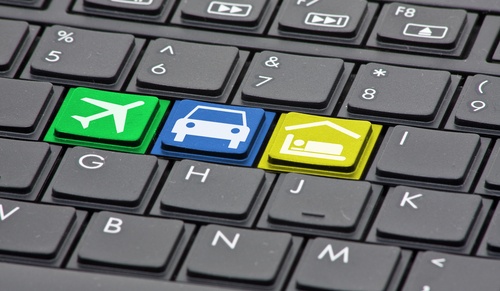Accounting
6 Ways to Save Using Travel and Expense Management
Today’s technology innovation and changes in traveler behavior are driving significant and rapid change in corporate travel, and businesses need modern solutions to take control of employee spend. In fact, manual processes are impacting your bottom ...
Jun. 27, 2017

Today’s technology innovation and changes in traveler behavior are driving significant and rapid change in corporate travel, and businesses need modern solutions to take control of employee spend. In fact, manual processes are impacting your bottom line in unexpected ways, costing you more than you think.
CFO Magazine reports that the average finance worker spends 49 percent of their time processing transactions, which equates to roughly half their day filling out forms and dealing with invoices. Not to mention, a recent study by American Productivity and Quality Center showed that because labor costs play such a huge role in how much expenses cost to process, some businesses’ outdated processes cause them to spend nearly twice as much as they would with more automation.
Financial leaders are always looking for ways to save, but understanding where money might be slipping through the cracks is crucial. Travel and expense (T&E) line items are a great place to start, but that level of detail and accuracy often requires automation.
Here are six ways automating with modern solutions can help uncover savings where you may not be looking:
1. Stop overspending on errors
Human error is inevitable. If your workers are manually entering and itemizing expenses, you’re asking for mistakes. According to a 2015 Oversight Systems study, one in every 10 travelers submits at least one duplicate expense in error, which easily adds up over time – Approximately $50 per error, to be exact.
Since automated T&E systems populate charges directly from suppliers, credit card companies and captured receipts, accuracy is no longer an issue and the time saved on the processes leads to less expensive operating costs, not to mention bigger rebates from paying credit card bill sooner and better cash flow.
2. Reduce management time
It’s no secret that extra steps take extra time, which is why manual processes can be so time consuming. When administrative steps such as requesting travel, booking reservations, paper receipts and authorizations can be removed with built-in automation, financial leaders can see not only increased productivity, but also a process that takes care of itself.
3. Gain visibility into mobile spend
Roaming mobile charges from traveling employees can easily add up unexpectedly. Since these costs are rarely accounted for in budgets they can deliver quite the unpleasant surprise in end-of-month finances and your bottom line. In fact, if you aren’t managing mobile contracts correctly, you could be over-paying by as much as 30% per device.
4. Pin-point savings without increasing overhead
Mobile technology has made it more difficult for businesses to ensure policy compliance and prevent fraud as employees often book directly and use mobile devices – which means their activity can be lost with manual or in-house systems. Monitoring and auditing becomes difficult when there’s no visibility into transactions.
Finance leaders need to be able to meet employees where they already are, and gain visibility into mobile transactions to spot savings without increasing overhead. Automation has built-in auditing and data to help prevent these issues.
5. Negotiate discounts
The right tools give you the freedom to track every dollar with each vendor, meaning you’re eligible for incentives. If you spend a certain amount of money, discounts are often promised – and automated T&E allows for that spend visibility.
6. Reduce tax costs
Employee travel comes with tax implications, such as payroll tax liabilities and value-added-tax (VAT) on international purchases. Fortunately, some of these taxes can be controlled and reclaimed – with the right visibility and tools.
Gain back that low-hanging fruit
With an average of 10 percent of the business budget devoted to T&E, that spending is low-hanging fruit when it comes to both managing expenses and unlocking savings. For many businesses, the amount of money unwittingly spent on wasteful processes would be shocking.
——-
This article first appeared on the Concur blog. See how your T&E solution stacks up: http://bit.ly/2sLjgFf.
